| |
All photos are
thumbnails - click on the thumbnail to view the full-sized
picture
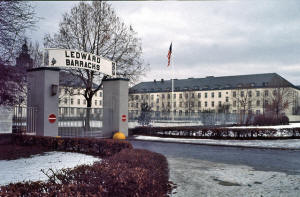
Ledward Barracks on the
outskirts of Schweinfurt.
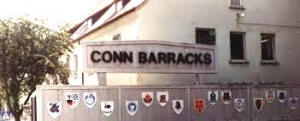
A few Kilometers out to the countryside, the entrance to
Conn Barracks.
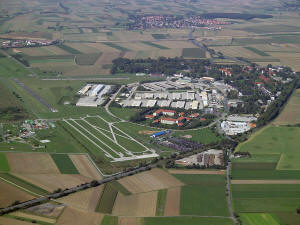
A very modern Conn Barracks as seen from the air.
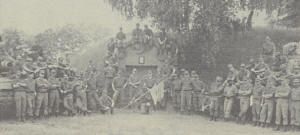
From the Office of the Schweinfurt PAO, a clipping showing
an A2 Company from Conn, the recipient of the 3rd Infantry
Division Draper Award in 1978.
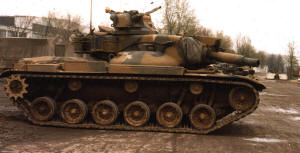
M60A2 at Conn in Fall / Winter paint scheme, 1978.
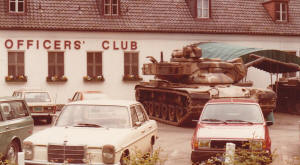
M60A2 and A1 set up at the Conn Barracks Officers Club for
the Armor Ball 1978.
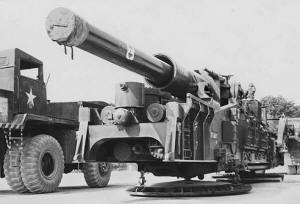
M65 Atomic Cannon on display showing gun, mount and dual
turn tables.
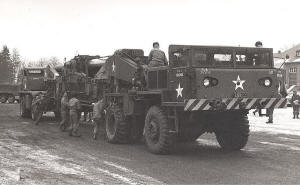
Cannon set up with tow and tug, front and rear ready for
road movement.
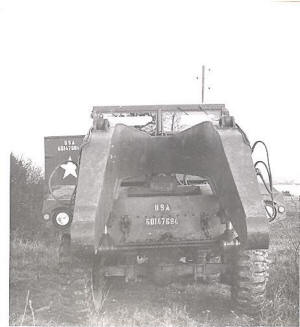
Nice detailed view of the fork mechanism that allowed the
tow and tug to grip the cannon mount for movement.

M65 set up for firing at Graf, note the troops with powder
bags at left.

Soldiers with shell cart, image gives a great impression of
the size.
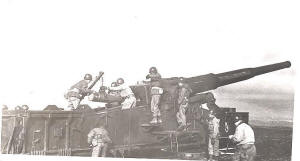
And here, the gantry crane has lifted the projectile and
swung it over to the loading tray.

Road movement accompanied by prayer.

Well … these events were not uncommon. Atomic Annie
fotos courtesy of Steve Donohue.
|
|
|
So Long –
Schweinfurt
The closing
of Ledward and Conn Barracks in Schweinfurt early next
month, marks the end of a long relationship between the
Bavarians and the American Army. Once, cities such as
Munich, Aschaffenburg, Bayreuth, Erlangen and Furth all were
major USAREUR troop centers and now the troops are gone, the
barracks closed, the only tanks on the roads and trails are
German and they seldom leave their training areas. It took
55 years and four generations of young American soldiers to
journey from occupation to partnership to final parting.
And in
Schweinfurt, Americans certainly left their mark. The two
barracks facilities were among the most modern remaining in
Germany - no doubt the wrecking ball will soon fly but when
you fly over the area and the sun is at a low angle
particularly after the hay has been cut in late summer, you
can still see in the fields just outside of town, the
shadows of bomb impact craters from the famous B17 bomber
raids of 1944. They have long been filled but the soil so
disturbed, has settled just a bit deeper than the
surrounding areas; the stubble that remains after cutting is
just a fraction of an inch longer and it casts a slightly
deeper shadow of green in interlocking circles crossing
rectangular fields.
Soldiers and
family members with ties to Bad Kissingen will recall that
Daley Barracks was under the administrative control of
Ledward Barracks. This had no effect on the day to day of
the cavalry but had everything to do with operating budgets,
building maintenance and who you called to get things done,
from spot painting to major facilities rehabilitations. And
this included Camp Wollbach / Lee.
Up they would
motor from Schweinfurt, brief cases and file folders full of
documents. Over coffee at the Hale Dining Facility, budgets
would be reviewed, remote site surveys completed and photos
taken. The Germans, with overall responsibility for the
facilities shook their heads and noted that at OP Sierra, we
now had porta - potties and by contract, they were emptied
twice weekly; the road leading to the OP had been re -
graded with fresh crushed stone set down. They asked if we
wanted to rebuild the burned out OP 13 and seemed greatly
relieved when we declined.
Back at
Daley, even after the cavalry and the VII Corps combat units
had departed Kissingen, the barracks and motor poll building
pounded flat and then the area revitalized with German
businesses, the Daley Barracks Housing Area continued as a
satellite housing area for Schweinfurt MILCOM. It was only
a few years ago that the housing area was finally returned
to German civil control.
Now, with the
hand off of Ledward and Conn to German authorities, the very
last echoes of American voices tied to the border cavalry
finally die away in the distance. Consider that the first
US Constabulary units involved in the border patrol missions
along what would become the Eaglehorse sector, deployed from
Ledward Barracks and it was here that the 2nd Battalion of
the 14th Armored Reconnaissance Regiment refitted from
Constabulary to combat unit sets prior to making the short
road march from Schweinfurt to Kissingen and occupying Daley
Barracks in 1952. From Camp Harris at Coburg, for decades
3rd Infantry Division cavalry troopers stationed at Ledward
watched the border on the southeastern flank of the
Eaglehorse and it was from them that US Patrol, at the
southeastern contact point, would get the movie package of
16mm films passed along from border camp to camp - beer hall
to beer hall.
Kissingen and
Schweinfurt were always linked when it came to the
military. Going back to the Nazi era, what would become
Ledward Barracks was known as Panzer Kaserne and was home to
an armored brigade of the 2nd Panzer Division. The
divisional anti - tank battalion was located at Adolf
Hitler Kaserne, a barracks located just across the street.
This area was totally destroyed during the war. Only 25
Kilometers distant was the home of the 2 Panzer motorcycle
infantry battalion at Bad Kissingen. No doubt the staff
officers and senior commanders routinely made the drive
between the two towns and something makes me think they
chose to spend the night at the Kur Stadt.
At Conn
Barracks, a former Luftwaffe training base, officer cadets
and NCOs learning to fly Stuka dive bombers in the 1930s
would see Kissingen as their first major visual checkpoint
when flying north / northwest. Through the clouds and
through time, the towns were joined by a military heritage
that will now scatter in the wind.
Memories may
vary with Eaglehorse cavalry troopers when it comes to
Schweinfurt. On the one hand, a brigade’s worth of motor
pools plus an ordnance general automotive support
maintenance company all added up to one hell of a lot of
places to beg for parts to keep cavalry vehicles running.
It’s not that the automotive supply parts system didn’t
function properly, it’s just that hitting the road, hat -in
-hand on the third day that a vehicle appeared on the dead
line report was seen as such great fun and good sport. The
thing was, every now and again, with enough plaintive
begging, you could score something you needed. Schweinfurt
was the first stop for the Kissingen’s cavalry XO
mendicants.
Schweinfurt
was also the “ land of the big PX “ or at least big in
comparison to the sutler’s outpost at Daley. The commissary
was bigger and well stocked, the movie theater was about the
same and the officer’s club - somehow I never found my way
over. But bigger was not always better - trips to the city
center of Schweinfurt at least made me appreciate Kissingen
all the more with the possible exception of the Christmas
Market running in December. If our town was all about the
tourist trade tolerating the Army, their town was industry,
long streets of four story apartment buildings, a down town
that had been fully restored after having been nearly
totally destroyed and American soldiers everywhere bringing
a certain vibe. I do recall visiting Willi Sachs Stadium
and noting that Kissingen had nothing like it and it would
have been a great place for a cavalry track meet - I wonder
if Schweinfurt’s merchants will miss the dollars or the
troops?
When it comes
to Schweinfurt, Conn and Ledward, the Army and the missions,
and what might make an interesting history to recall, two
specific units come to mind. There were plenty of tanks and
plenty of cannon in Schweinfurt through the years but here
are two units out of the ordinary. There is no link to Bad
Kissingen but the fun is in the recalling.
Star Ships
In the mid
and late 1970s, two battalions of 3rd ID tanks, the 2/64
and 3/64 Armor at Conn, were the recipient of the M60A2
tank. It featured the M162 main gun / missile launcher,
basically the same cannon as found on the M551 Sheridan,
mated to an even more complicated turret stuffed with
electronic components, cables, ready lights and Oms meters
all happily coexisting in a turret mechanic‘s nightmare.
The turret was then dropped into the generally reliable M60
tank hull creating a perfect mix of mobility and
dysfunction. Rather than consolidating the A2’s as a
separate battalion that then could be task organized as
necessary in the field, the A2s of Schweinfurt were arrayed
in hybrid battalions, the 2nd and 3rd battalion of the 64th
Armor each had one A2 company and two A1 companies. There
was also discussion at that time of moving towards select
tank battalions consisting of four tank companies, two
companies each of A1 and A2. Luckily sanity and the M60A3
program came along and in 1979, the A2s of Schweinfurt and
elsewhere in Germany were withdrawn from service and
unceremoniously shipped back to US depots. Next stop -
hulls for the AVLB program and turrets as down range
targets.
I can recall
seeing the A2s now and again in Schweinfurt motor pools long
after the Eaglehorse had turned in its Sheridans, and
feeling that chill down my spine as I canvassed mech
infantry units for those electric regulators that seemed to
die so quickly in M113A1s.
Atomic Annie
The second
interesting weapon system found at Schweinfurt takes us back
to the mid 1950s, the days of the 14th Cavalry at Kissingen
and the largest cannon fielded by the US Army.
The M65
Atomic Cannon, “ Atomic Annie “ was the largest mobile field
cannon ever deployed to Germany. A total of 20 of these
cannon were built in the early 1950s, the majority deployed
to Germany, six sent to Okinawa and some small number
remaining in the US to support crew training. Checking in
with a barrel diameter of 280mm, the cannon was configured
to fire both conventional and nuclear rounds, with a
published range of over 20 miles and an unofficial range of
35 miles. Accuracy was said to be +- twenty meters under
optimal conditions.
Engagement
with the atomic round was the sole purpose behind this
ponderous weapons system. It was mobile, using a powered
tow and tug system of dual tractors, front and back to
maneuver the cannon through German city streets. It was
remarkable that skilled driver teams could at all safely
move the cannon but accidents were fairly common. One
common source of problems was simple road collapse under the
weight, particularly if a tug got too close to the road
edge.
Once at the
firing point, the tugs disengaged and the cannon rested on
its chassis which in turn rested on front and rear turn
table bases. Only one atomic round was ever fired, this in
the United States as the final engineering proof that both
the cannon and round were combat functional. Conventional
rounds were used in training.
Battery A of
1st of the 613th Field Artillery Battalion later re
designated as the Alpha Btry, 3rd gun battalion, 82th FA
was located at Schweinfurt, probably at Conn but that
particular detail is unclear. It appears as though the
batteries were configured as four gun sets with the
complementary support, maintenance and FDC sections as
necessary. Accounts vary and it is surprising how little
has been researched on these giant cannons in Schweinfurt.
They were stationed from the mid 1950s thru the early 1960s
although even the end date of that battery is in question.
What is clear is that when they went out the gate, pretty
much everyone, German civilian and American serviceman, held
their breath when it came to the first narrow turn and held
their breath again until it was clear that this was only a
practice alert.
Please Insure
…
So all these
things at Schweinfurt fade into darkness just like at Bad
Kissingen some years earlier, gigantic cannon, marginal
tanks, men and women, troopers at the border and family
members. From Schweinfurt, soldiers set forth for Operation
Desert Storm, Operation Iraqi Freedom and Operation Enduring
Freedom in Afghanistan. So many days spent training in the
familiar dark green forests, the winters of Germany and the
back drop of the Cold War and all leading to fast
deployments, arid, dusty lands and distant hot wars.
Future US
garrisoning of troops in Germany appear to be limited to one
or two mega bases near Grafenwoehr. With so much tension
in the Ukraine, the idea of rotating battalions as
unaccompanied six month tours to bases in Poland is back
under discussion and at the same time, fifty thousand
personnel slots are being eliminated from the active Army.
Looking in the rear view mirror, the Cold War doesn’t look
that bad and it is rapidly fading from sight - years pass,
fresh troops, new missions, new garrisons and ever dangerous
foes.
Will the last
American troopers at Conn and Ledward barracks please insure
that as they depart, the lights are turned off, the heating
is set to low, leave the keys on the table and insure the
door is locked behind you. We hope you enjoyed your stay
and please come back in a few years as tourists, you’ll
hardly recognize the place.
August 2014
Go
here to see
a huge selection of photos from the Schweinfurt Public
Affairs Office that track the history of the US Army at
Ledward and Conn Barracks. I do not know how long this will
be up so rip if you want to save an image.
And
here to see
their You Tube movie efforts.
And
here you
will find the complete set of all historical images related
to Conn and Ledward. Check out the album that shows the
removal of the Army Heritage Display Vehicles!
Go
here to see
a modern day five minute presentation on a M60A2 in a museum
with plenty of interior turret footage.
Go
here to see
a brief film recording the actually firing of the nuclear
test shell from the Atomic Cannon.
Go
here to see a
great selection of modern day images of the Atomic Cannon
on display.
| |
|
|
| |
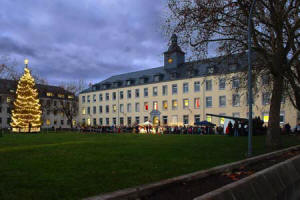
Ledward Barrracks HQ Building recalled in happier days. |
|
| |
|
|
| |
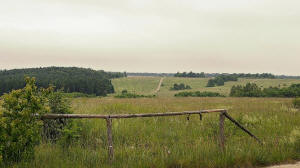
The wind, the fields and the silence at Conn Barracks. |
|
| |
|
|
|
|